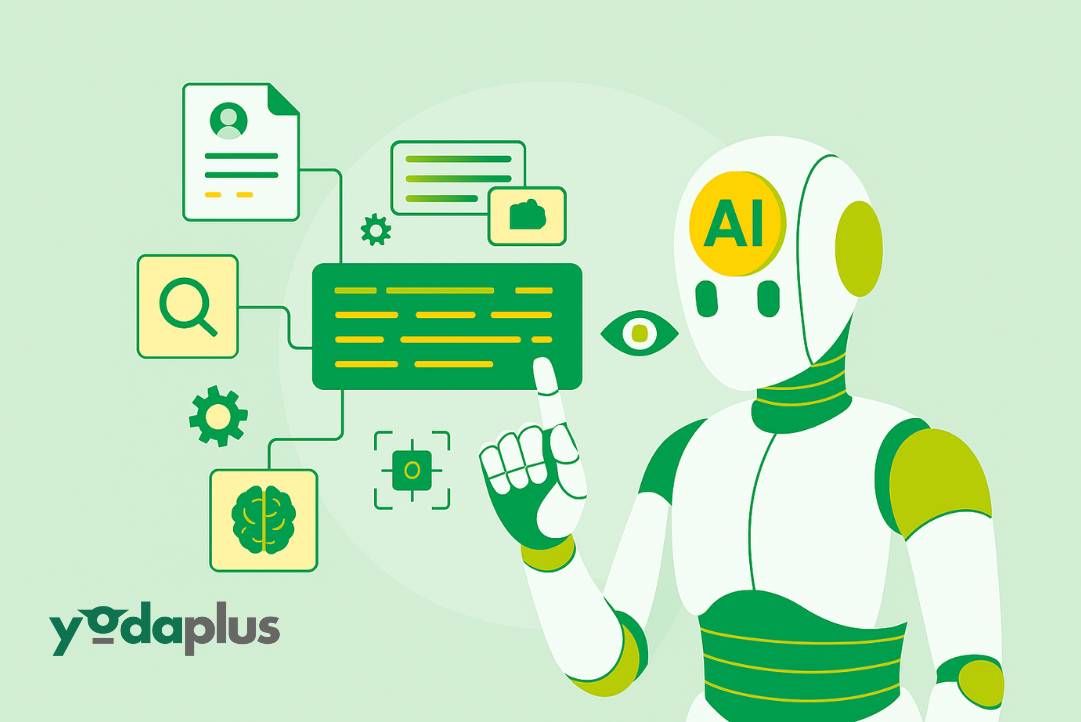
Traditional AI vs Agentic AI: How Autonomous Systems are Transforming Business Operations
April 2, 2025 By Yodaplus
Artificial Intelligence (AI) has swiftly transitioned from a speculative vision of the future to a cornerstone technology underpinning today’s business landscape. Initially, traditional AI empowered companies with robust capabilities in data analytics, automation, and predictive modeling, transforming operations and customer interactions. However, the advent of Agentic AI marks a substantial paradigm shift, enabling AI systems to independently make decisions, set objectives, and autonomously execute complex tasks. This blog delves into the technical distinctions between Traditional AI and Agentic AI, illustrating how leading industries—including Retail, Supply Chain, and Banking, Financial Services, and Insurance (BFSI)—are strategically adopting these sophisticated systems for enhanced efficiency and innovation.
Understanding Traditional AI
Understanding Traditional AI involves recognizing its reliance on structured approaches and historical data. It predominantly encompasses supervised and unsupervised machine learning algorithms, where supervised learning predicts outcomes using labeled data, and unsupervised learning identifies patterns from unlabeled datasets. Additionally, traditional AI incorporates natural language processing (NLP), enabling machines to interpret, generate, and respond to human language, and data mining techniques that uncover hidden insights within large volumes of data. Overall, traditional AI systems function by analyzing past datasets, applying predefined rules, and producing outputs or recommendations based on these historical trends, limiting their ability to independently adapt or respond beyond their programming.
Key Characteristics of Traditional AI
Rule-Based Decision Making
Traditional AI makes decisions by analyzing structured, historical datasets and following predefined rules or logic. Its capabilities depend heavily on the quality and relevance of past data, which restricts adaptability to unforeseen scenarios
Limited Autonomy
Such AI systems typically lack independent decision-making capabilities, thus requiring consistent human oversight, intervention, and guidance to ensure accuracy and relevance. This dependency can limit operational efficiency and scalability.
Batch Learning
Models built using traditional AI need periodic retraining, known as batch learning, to incorporate new data. Without regular updates, the systems can become outdated, losing their effectiveness as data evolves.
Predictive but Reactive
While traditional AI excels in predicting outcomes based on historical patterns, it remains reactive, lacking the real-time responsiveness needed to dynamically adjust actions or strategies in rapidly changing environments.
However, traditional AI faces inherent challenges, such as limited adaptability to new and dynamic situations, operational silos resulting from isolated systems, and a heavy dependency on frequent manual interventions and updates. Additionally, traditional AI lacks automated decision-making capabilities, restricting its ability to proactively respond to evolving scenarios in real-time. To overcome these limitations, organizations need Agentic AI, which provides autonomous decision-making, continuous learning, and real-time adaptability, enabling businesses to achieve higher efficiency, agility, and strategic flexibility in a rapidly evolving digital landscape.
Introducing Agentic AI
Agentic AI refers to autonomous agents designed to independently make informed decisions, dynamically adapt to new and unforeseen situations, and collaborate effectively with other agents in real-time. Unlike traditional AI, Agentic AI operates on continuous streams of live data, enabling it to learn, evolve, and improve autonomously, without explicit human intervention or predefined instructions. By proactively interacting with their environment and coordinating seamlessly with other AI agents, these intelligent systems drive unprecedented efficiency, agility, and innovation, making them essential for addressing complex, real-time challenges across industries.
Technical Features of Agentic AI
- Autonomy and Decision-Making: Agents leverage real-time data and advanced decision-making models (e.g., reinforcement learning) to operate independently without predefined rules or supervision.
- Real-Time Adaptability: Continuous learning mechanisms enable agents to quickly adapt their behavior in response to dynamic environments and data inputs.
- Collaboration: Built-in communication protocols and coordination frameworks allow multiple agents to work together seamlessly, improving collective intelligence and task efficiency.
- Scalability: Architected with distributed systems principles, Agentic AI enables horizontal scalability across departments or processes, ensuring robustness and flexibility at scale.
Agentic AI in different Industries
Retail Sector
Agentic AI significantly enhances customer experiences through real-time personalization and dynamic adjustments of pricing, promotions, and recommendations based on instantaneous customer interactions and market trends.
Supply Chain Management
Agentic systems provide real-time insights and autonomous decision-making capabilities to manage complex supply chain operations, optimize inventory in response to live demand signals, and adjust logistics dynamically, significantly reducing operational costs.
Banking and Financial Services (BFSI)
Agentic AI proactively monitors real-time transactional data, instantly identifies fraudulent activities, dynamically adjusts risk management strategies, and ensures continuous regulatory compliance.
Comparative Analysis
| Attribute | Traditional AI | Agentic AI |
| Decision-making | Static, rule-based | Autonomous, dynamic |
| Learning | Batch, periodic retraining | Continuous, real-time |
| Data Processing | Historical datasets | Real-time streaming data |
| Adaptability | Limited; requires manual updates | Self-optimizing, highly adaptive |
| Collaboration | Siloed, minimal interconnection | Strong inter-agent collaboration |
.
Future Outlook
The shift from Traditional AI to Agentic AI represents a fundamental evolution in AI capabilities. Businesses that proactively adopt Agentic AI stand to benefit significantly through enhanced operational agility, superior decision-making, and substantial competitive advantages.
Integrating blockchain with Agentic AI can further enhance data integrity, security, and transparency by providing verifiable, immutable transaction records. This synergy is particularly valuable in highly regulated industries such as BFSI and in supply chains requiring complete transparency and traceability
Conclusion
As businesses increasingly face complex, real-time operational challenges, Agentic AI emerges as an essential technology for future-proofing operations. By leveraging autonomous decision-making, continuous learning, and inter-agent collaboration, industries such as Retail, Supply Chain, and BFSI can unlock unprecedented levels of efficiency, responsiveness, and innovation.
Yodaplus empowers businesses on their Agentic AI journey by delivering customized AI solutions tailored to unique industry challenges. With extensive expertise in AI-agent infrastructure, blockchain integration, and advanced software architectures, Yodaplus enables organizations to seamlessly implement and scale autonomous systems, ensuring sustained competitive advantage and driving digital transformation across sectors.